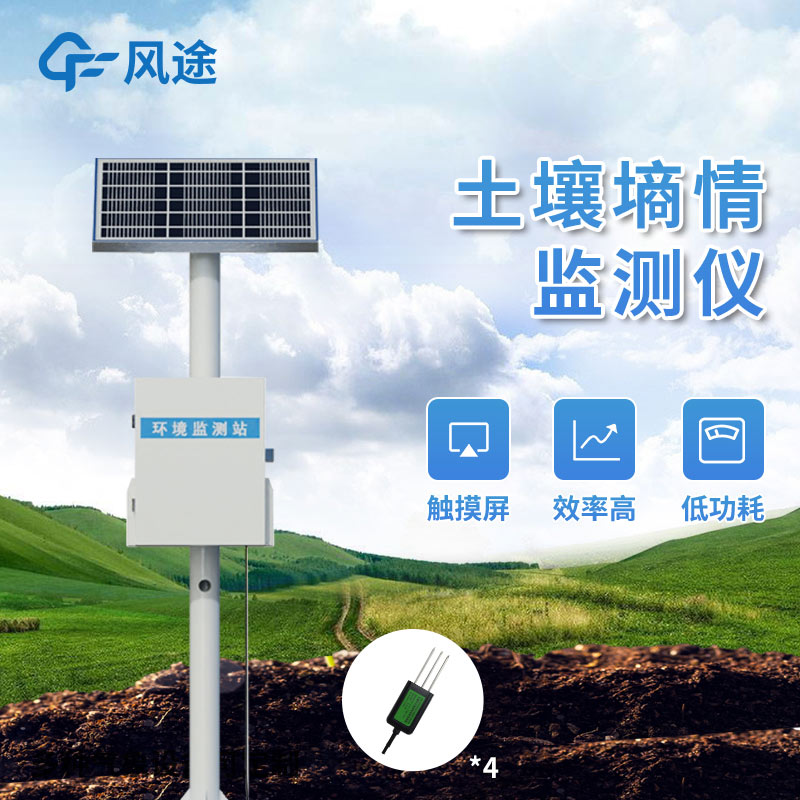Tianqiong Sensor IOT Technology Co., Ltd
Sales Manager:Ms. Emily Wang
Cel,Whatsapp,Wechat:+86 15898932201
Email:info@fengtutec.com
Add:No. 155 Optoelectronic Industry Accelerator, Gaoxin District, Weifang, Shandong, China

Sales Manager:Ms. Emily Wang
Cel,Whatsapp,Wechat:+86 15898932201
Email:info@fengtutec.com
Add:No. 155 Optoelectronic Industry Accelerator, Gaoxin District, Weifang, Shandong, China
time:2025-05-15 10:16:33 source:Weather Station viewed:166 time
Soil moisture automatic measurement relies on multiple sensor technologies. For soil water content measurement, Frequency Domain Reflectometry (FDR) and Time Domain Reflectometry (TDR) are commonly used. FDR sensors calculate water content by measuring the soil's dielectric constant, as there is a positive correlation between soil water content and dielectric constant. TDR sensors, on the other hand, emit high-frequency electromagnetic pulses into the soil and calculate soil water content based on the pulse propagation time and reflection signals in the soil. Soil temperature is measured using thermistors, whose resistance values change with temperature and are converted into temperature values through circuits. Salt sensors reflect soil salinity by measuring the electrical conductivity of the soil solution.
Data collected by these sensors undergo analog-to-digital conversion, storage, and preliminary processing by a data collector, and are then transmitted in real time to a data center via wireless communication technologies such as GPRS and 4G. Staff can intuitively view soil moisture data at each monitoring point through specialized monitoring software.
A soil moisture monitoring station is a comprehensive device integrating the above measurement technologies. It typically consists of sensors, a data collection and transmission system, a solar power supply system, a protective chassis, and other components. After being deployed in farmland, forest land, and other areas, it can automatically collect soil moisture data at set frequencies, unaffected by weather and time. The data center can receive data from multiple monitoring stations, generate soil moisture trend charts and early warning information through data analysis models. When the soil water content falls below the suitable range for crop growth, the system automatically issues irrigation warnings; if the salinity is too high, it prompts soil improvement.
Soil moisture monitoring stations have realized the automation and intelligence of soil moisture monitoring, providing reliable data support for precise agricultural irrigation and scientific management, and are of great significance for improving water resource utilization efficiency and ensuring crop growth.

Transgene detection is a portable device specifically designed for detecting genetically modified (GM) components in soybeans. This instrument utilizes rapid PCR technology, allowing users to perform on-site sample DNA extraction and detection analysis, quickly identifying GM components in soybeans and other food crops. Its lightweight design makes it easy to carry, meeting the needs of on-site testing....
With the continuous progress of science and technology, refined meteorological monitoring has become an important development direction of modern meteorological services. The purpose of refined meteorological monitoring is to obtain more accurate, detailed, and high spatio-temporal resolution meteor...
In a certain farmland, the LED electronic display of "standard agrometeorological stations" real-time presents data such as soil water content, salinity, and ground temperature, providing key basis for farmers' scientific planting. The new-generation standard agrometeorological station...
Wind speed monitoring is not only crucial for the promotion of a green lifestyle but also directly affects our daily travel safety and the production environment. When the wind speed is too high, it not only poses a threat to driving safety but may also trigger natural disasters. Therefore, the prec...